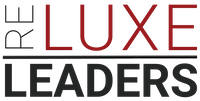Our SWOT Template is a companion tool for our Recruiting Master Class and Office Profitability Masterclass
Using the SWOT template is a good way to visually evaluate different projects you are thinking about taking on.
It breaks down the strengths (S) that you or your organization is bringing to the table.
Then it looks at the weaknesses (W) that are inherent. An important note on the weaknesses, the best you can do is manage around them. For this exercise, you want to list them out so you can best minimize the risk for your next project.
From there, you move onto the opportunities (o) or upside. These should represent what it is you are looking to accomplish and gain.
Finally the threats (T), what could go wrong? We have a simple one page template that we use internally and with our clients to help crystalize the issues when evaluating a new endeavor.

Download the RELL SWOT Template Here
What is a SWOT analysis and how should we use the SWOT Template?
A SWOT analysis is a strategic planning system through which organizations can determine their own advantages, disadvantages, possibilities and risks. By assessing an organization’s internal and external environment, it is possible to identify and exploit its advantageous attributes, repair its shortcomings, benefit from the openings available and mitigate against any threats. The eventual output of a SWOT assessment is utilized to generate informed decisions and establish a strategy to reach desired objectives.
SWOT Template – Strengths
When evaluating strengths for a SWOT analysis, it is important to consider the following:
- Unique abilities or qualities that set the organization apart from its competitors.
- Strong brand recognition or reputation in the industry.
- Highly skilled and knowledgeable staff.
- Efficient and effective internal processes and systems.
- Strong financial position, including high profits, positive cash flow, and low debt.
- Access to valuable resources, such as technology, patents, or data.
- Strong partnerships and relationships with suppliers, customers, and other stakeholders.
It is also important to gather data and conduct market research to validate the strengths and get a more accurate picture of the internal and external environment.
SWOT Template – Weaknesses
When evaluating weaknesses for a SWOT analysis, it is important to consider the following:
- Inefficient or ineffective internal processes or systems.
- Lack of financial resources, such as low profits or high debt.
- Inadequate skills or knowledge among employees.
- Poor brand recognition or reputation.
- Dependence on a single product or service line.
- Outdated technology or equipment.
- Weak partnerships or relationships with suppliers, customers, and other stakeholders.
As with strengths, it is important to gather data and conduct market research to validate the weaknesses and get a more accurate picture of the internal and external environment. This information can be used to develop a plan to address the weaknesses and improve the overall performance and competitiveness of the organization.
SWOT Template – Opportunities
When evaluating opportunities for a SWOT analysis, it is important to consider the following:
- Emerging trends or new markets that the organization can exploit.
- Changes in regulations or laws that create new business opportunities.
- Expansion into new geographic regions or international markets.
- Partnership or acquisition opportunities with other companies.
- Technological advancements that can be leveraged to create new products or services.
- Growing customer demand for existing products or services.
- Availability of funding or grants to support growth initiatives.
It is important to gather market intelligence, conduct market research, and monitor industry trends to identify new opportunities that the organization can capitalize on. This information can be used to inform strategy and decision-making, and help the organization achieve its goals and remain competitive in the market.
SWOT Template – Threats
When evaluating threats for a SWOT analysis, it is important to consider the following:
- Competition from established or new players in the market.
- Changes in regulations or laws that negatively impact the business.
- Economic downturns or shifts in the business cycle.
- Technological disruptions that render current products or services obsolete.
- Political instability or geopolitical risks in key markets.
- Natural disasters or other events that disrupt operations or supply chains.
- Declining customer demand for existing products or services.
It is important to gather information on potential risks and threats to the organization and its industry, and to regularly monitor the external environment to anticipate and respond to changes. This information can be used to develop contingency plans and to proactively address potential threats before they materialize, ensuring the continued success and stability of the organization.
Want to take a deeper dive on using the SWOT Template?
We recommend this book: The Visual Mba: Two Years of Business School Packed into One Priceless Book of Pure Awesomeness





